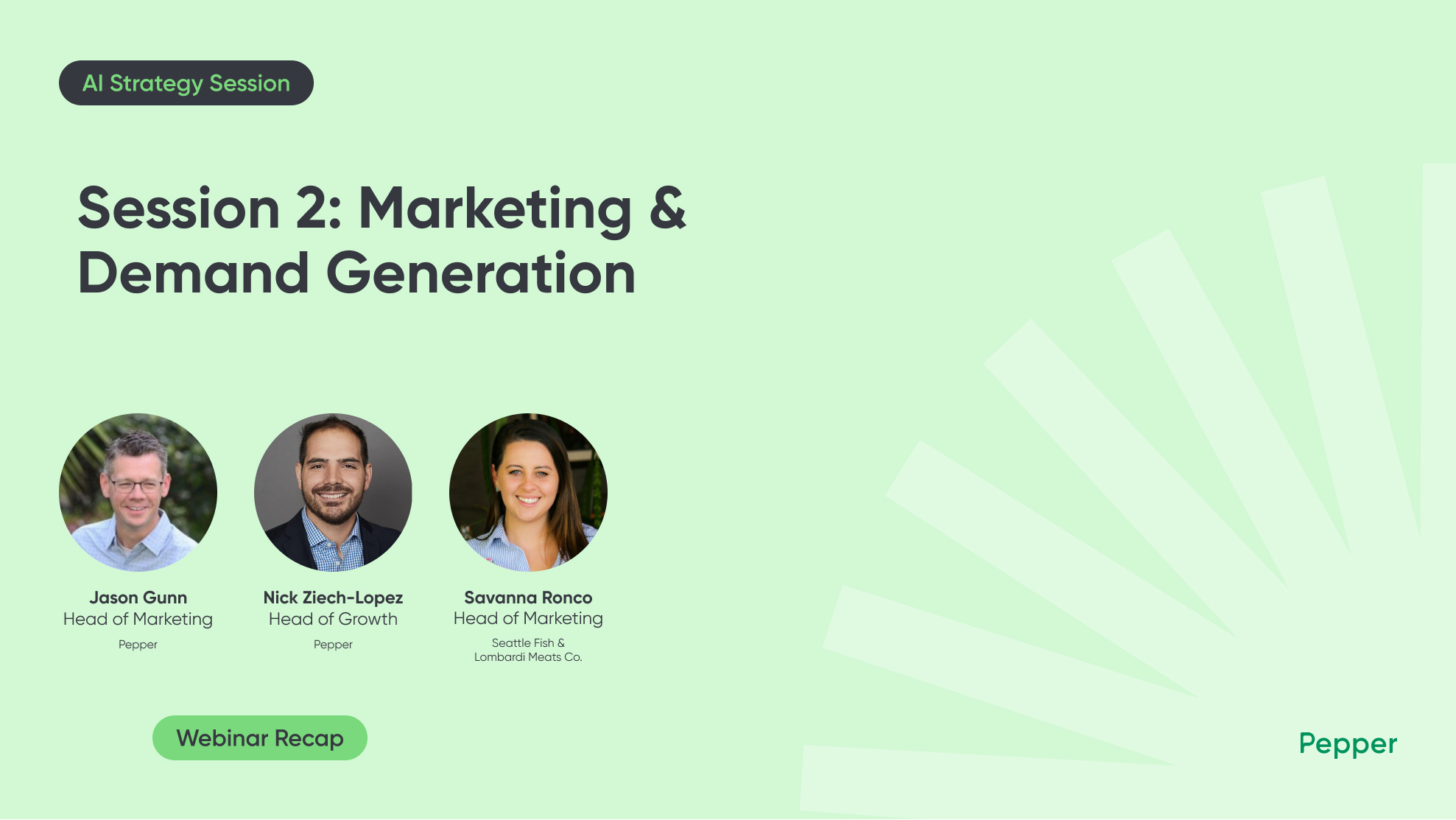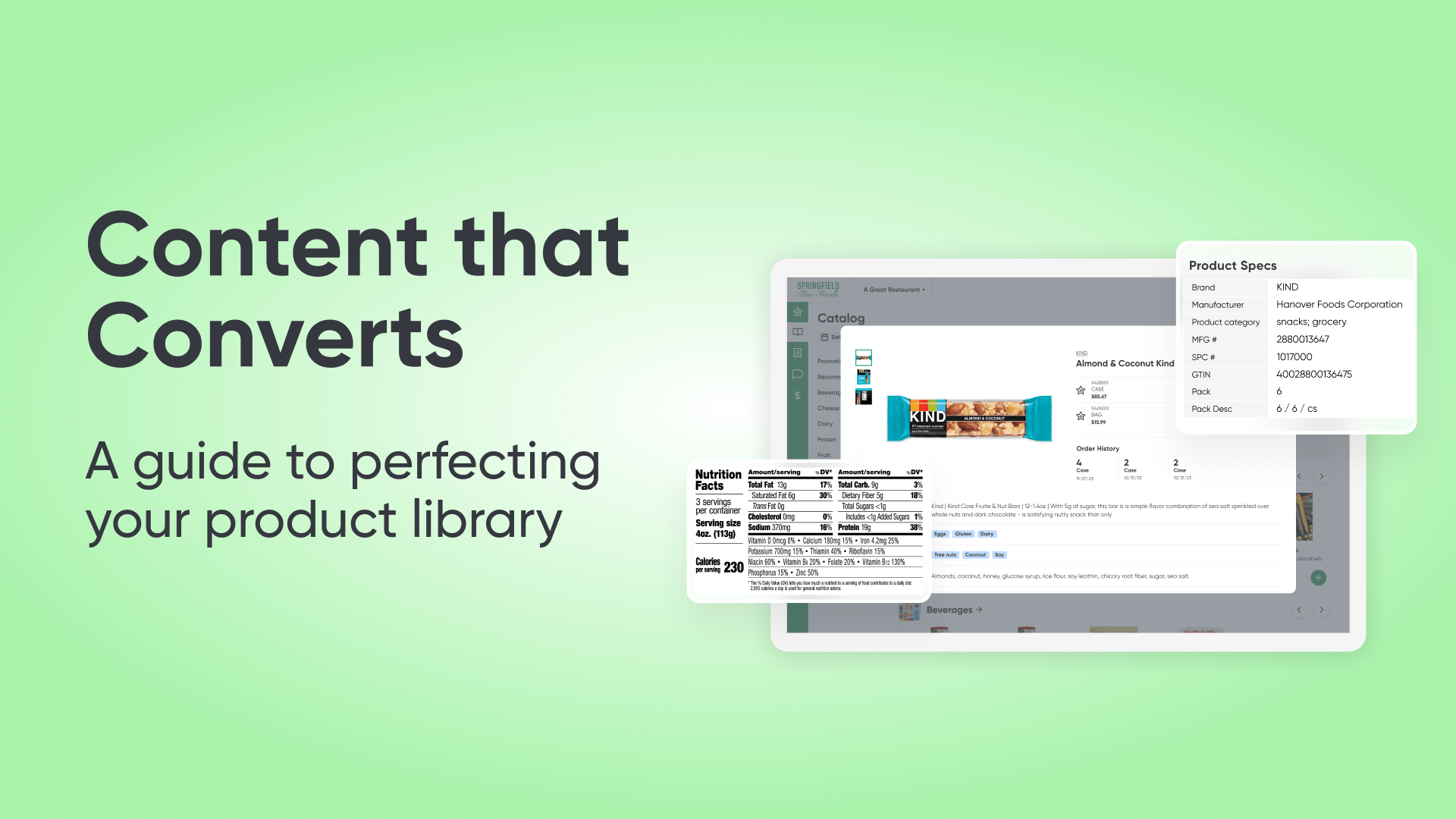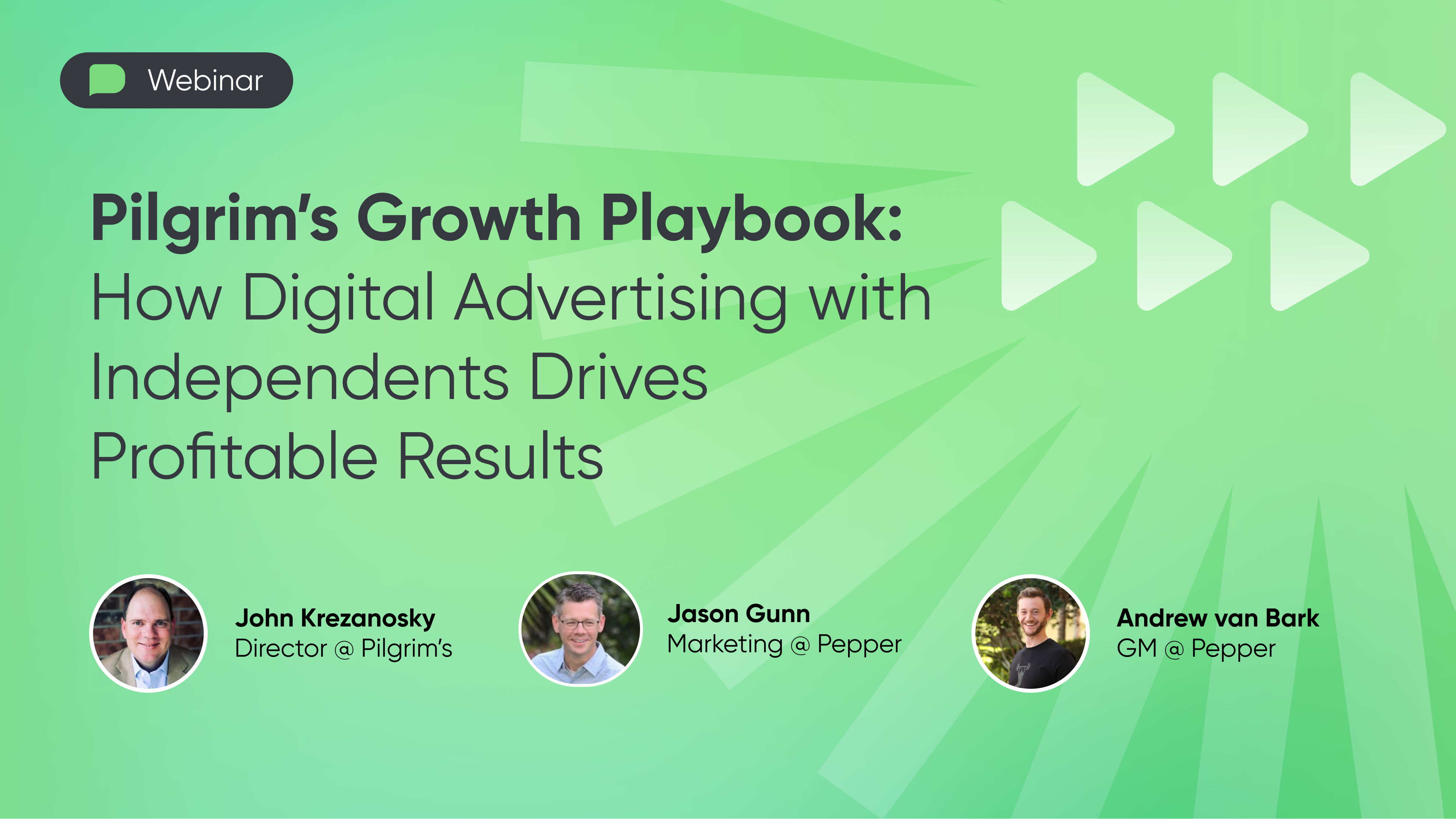With tools like ChatGPT now widely available (and free), marketing teams, no matter how small, can move faster, launch better campaigns, and support their sales orgs more effectively than ever before.
What used to take a week now takes an afternoon.
What once required a designer, a copywriter, and a developer can now be done by one person with a good prompt and the right template.
Savanna Ronco, Marketing & Sustainability Manager at Seattle Fish Company, is living proof of this shift. As a one-woman marketing team, she’s running full campaigns, training sales reps, updating the website, and creating customer-facing assets.
It’s not magic. Savanna has figured out how to use widely available tools, such as ChatGPT and Canva, to scale her impact, save time, and make the most of her creativity. In our latest webinar, we review ways to use free AI tools to create campaigns, create micro-targeted messaging, and make it a breeze to update your public-facing collateral.
From Idea to Campaign: How AI Fuels Brainstorming
One of the most powerful uses of AI for marketers is simply helping them get started. To kick off the webinar, Savanna explained how she uses ChatGPT to brainstorm campaign ideas based on real-time product inventory. For example, when Seattle Fish needed to promote specific cuts of meat, she used GPT to generate campaign names (like “Meat Monday”), content themes, and post ideas tailored to chefs and restaurant buyers. Instead of staring at a blank page, AI gave her structure and a jumping-off point for messaging across email, social, and web.
The key insight here: even a vague prompt, such as "What can I do with these eight cuts of beef?" can yield surprisingly useful ideas, especially when followed by more specific prompts to refine tone, structure, or channel focus.
Use the Right Tool at the Right Time
A major takeaway from the session was knowing when to stop using AI. As Jason put it, “The emojis start multiplying, and that’s your sign.” While GPT is great for idea generation and copywriting, it’s not a design tool. Once you’ve drafted a post or headline, it’s often better to bring that content into a visual tool like Canva, where you can apply templates and turn rough ideas into polished assets.
Savanna describes how she often pairs GPT-generated content with Canva’s social media templates, enabling her to quickly go from draft to deployment without reinventing the wheel. This approach reduces the burden of being a solo marketer and helps her produce higher-quality visuals faster.
Don’t Forget the Website
While most distributors focus on outbound campaigns, such as emails, social posts, flyers, Savanna emphasized that the company website is still the most powerful owned channel. During the session, a live poll revealed how distributors in attendance last updated their website, and responses were mixed: many hadn’t touched it in months.
With a few simple prompts, even if you’re not a developer, GPT can walk you through what to do, or even help you communicate better with someone who can make the edits. Savanna noted that this has saved her time when troubleshooting small design tweaks or mobile formatting issues.
Turn the ‘Push List’ into a Compelling Story
Savanna shared a common pain point: receiving a dry Excel document from the purchasing team and needing to make it “customer friendly.” In this case, it was a stock list of oysters. By pasting the data into GPT and asking for tasting notes, descriptions, and promotional language, she was able to transform a boring product list into a polished sales asset.
This type of content becomes the foundation for customer-facing guides, internal sales training materials, and even leave-behinds for servers in restaurants. It was a clear example of using AI to bridge the gap between raw operational data and effective storytelling.
Internal Marketing Is Important, Too.
Even the best campaigns won’t work if the sales team doesn’t know how to talk about the product. Savanna showed how she uses GPT to create “just enough” training for reps, like short guides, talking points, or even laminated cards with oyster tasting notes for use on the floor. The point isn’t to overload reps, but to give them a few high-impact insights that help them pitch confidently.
This internal enablement is just as important as external promotion, but often gets lost when lean teams are time constrained. AI tools can easily condense key product info into digestible one-pagers, Instagram captions, or sales emails very effectively.
Final Thoughts: Kickstarting the Growth Engine.
The session closed with a reflection on how AI can make marketing more efficient, creative, and collaborative. Whether you're running a single blog or managing a full campaign calendar, tools like GPT offer a flexible way to ideate, build, and publish faster. And when paired with design platforms, CMSs, and a little creative instinct, they become an engine for growth.
Key Takeaways:
- Start with AI, then switch tools: Use GPT for ideation and drafting, but move to Canva or PowerPoint for final design.
- Tailor content by channel: Think through how your messaging should vary across email, social, website, and printed leave-behinds.
- Don’t ignore your website: Keep your homepage, blog, and product pages fresh with SEO-rich content.
- Train reps, not just customers: Create internal guides and tools that help your team sell smarter and faster.
Use what you have: Even spreadsheets and stock lists can become beautiful sales tools with a little prompting and creativity.
.webp)
Schedule a Pepper Demo today
































